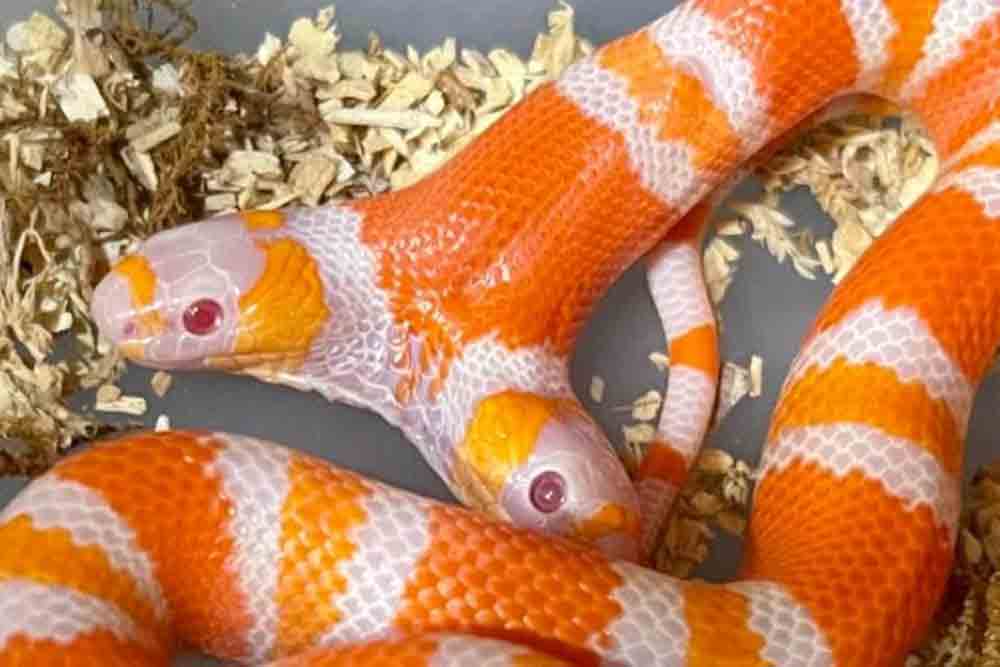Two-headed snakes are said to live a shortened life in the wild due to the fact that they have two heads, which may inhibit their defenses when faced by predators.
A snake breeder in North Carolina hatched out a two-headed albino Honduran milksnake in August and shared a photo of the snake, named Gemini, with us. Mabe told ReptilesMagazine.com that Gemini, a girl, is doing well. Both heads are eating and both tongues are flicking. Both heads also drink water. Gemini has shed twice since she hatched and has eaten four times.
“We have bred snakes for over 30 years and this is our first two-headed snake to hatch. It was the very last egg to hatch from this season’s 400+ eggs.” Thanks for sharing Tammy!
The condition of having two heads is known as bicephaly. It seems to occur more often in reptiles, but also occurs in other animals. Those animals, however, usually don’t live long. Two-headed reptiles do survive in captivity, and some have been found living in the wild.
Honduran milksnakes are found throughout much of Central America and southwestern South America. They are widely captive bred in the hobby and can grow to 5 to 6 feet, with some exceptional specimens growing up to 7 feet in length.
Two-headed Garter Snake Found In Nebraska
Two-headed Diamondback Terrapin Hatchling Doing Well At MA’s Cape Wildlife Center
A Pair Of Two-Headed Sea Turtle Hatchlings Discovered On Grand Cayman Islands
Two-headed snakes are rare but not uncommon. They are said to live a shortened life in the wild due to the fact that they have two heads, which may inhibit their defenses when faced by predators. Cases of captive-born two-headed snakes occur almost every year. They are definitely cool snakes and Gemini looks to be on her way to a healthy life.



